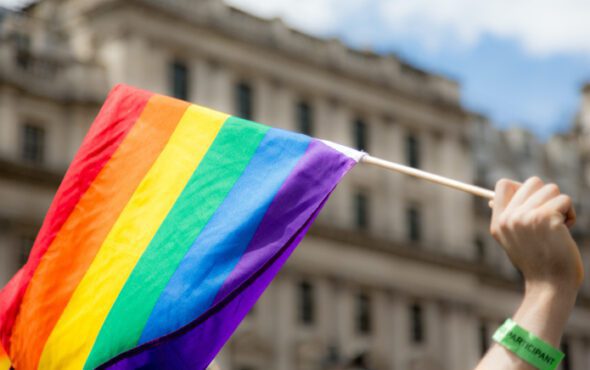
More than 3% of people in England and Wales are LGBTQ+, according to the first official national census to include questions about sexuality and gender identity.
Britain conducts a compulsory census of the entire population aged 16 years and over once every 10 years.
The questions about sexual orientation and gender identity in the latest 2021 census were voluntary, and 7.5% of people declined to disclose their sexual orientation, while 6% did not answer the question on gender identity.
Scotland’s data is not yet available as it delayed carrying out its census for a year due to the COVID-19 pandemic.
LGBTQ+ campaigners – who have long called for questions about sexual and gender identity to be included in the census – said the results would help better target support for minority groups.
Here’s what you need to know:
What does the data show – and are there any surprises?
About 1.5 million people in England and Wales said they identified as either lesbian, gay, bisexual or another minority sexual orientation – 3.2% of the adult population. About 90% of respondents said they were heterosexual.
In terms of transgender and non-binary people, 262,000 people – or 0.5% – said their gender identity was different from their sex registered at birth.
The census also revealed that 28,000 people described themselves as asexual – or without sexual feelings or desire. No previous data has been available for asexual people.
The data on sexual minorities is similar to other surveys carried out by the Office for National Statistics, which also manages the census.
Its latest Annual Population Survey in 2020 estimated 3.1% of the UK population identified as lesbian, gay or bisexual.
But the figures are lower than other estimates by LGBTQ+ rights groups and government officials.
Stonewall, a leading LGBTQ+ charity, estimated last year that 84% of British people identified as heterosexual and about 3% were trans or did not identify as either male or female, in a report based on a survey of more than 2,000 people.
The Government Equalities Office has previously suggested there are between 200,000-500,000 trans people nationwide.
Why is it significant that LGBTQ+ people were officially counted for the first time?
Stonewall described the decision to include sexuality and gender identity questions in the census as “historic”.
“For the past two centuries of data gathering through our national census, LGBTQ+ people have been invisible, with the stories of our communities, our diversity, and our lives missing from the national record,” said chief executive Nancy Kelley.
“Today is a historic step forward … finally painting an accurate picture of the diverse ‘Rainbow Britain’ that we now live in, where more and more of us are proud to be who we are.”
The move further recognises how questions of sexual orientation and trans rights have become part of the national conversation.
“Having these first census estimates about the population (of England and Wales) in relation to gender identity, as well as sexual orientation at a local level, is crucial,” said ONS director Jen Woolford.
What is the data in the national census used for?
Governments use the information collected in censuses to determine a range of social policies, from housing to health.
“The data will help decision-makers understand the extent and nature of disadvantage which people may be experiencing in terms of educational outcomes, health, employment and housing,” said Woolford.
For LGBTQ+ rights organisations, the information will also help better support the community.
“This data will help Stonewall and others make the case to better target resources and support to help LGBTQ+ people thrive, whether in health, education or work,” said Kelley at Stonewall.
“But just as important, it means our country knows itself a little better today.”
Reporting by Hugo Greenhalgh.
GAY TIMES and Openly/Thomson Reuters Foundation are working together to deliver leading LGBTQ+ news to a global audience.



